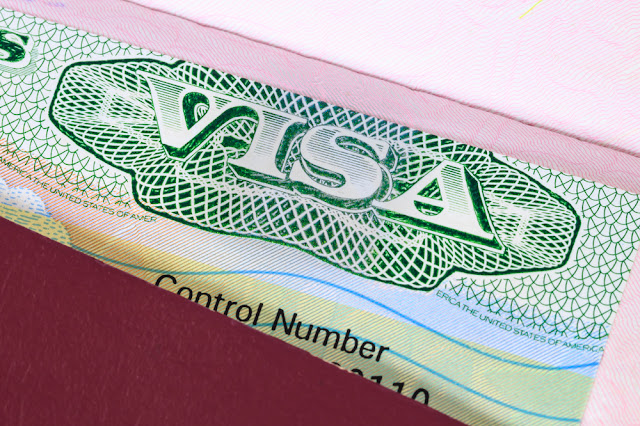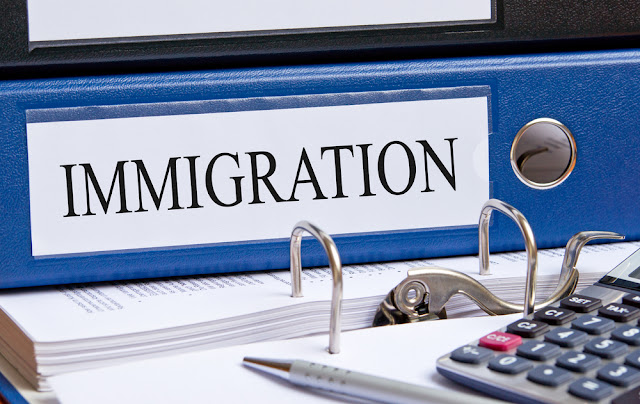Introduction: Permissible Activities While on B2 Status
The
B2 nonimmigrant visa classification is if for temporary visitors for pleasure. There are limited activities in which a B2 nonimmigrant may engage in while on B2 status without violating status. In this article, we will review permissible and impermissible activities while on B2 status. Please read the full version of this article to learn more [
see article].
The B2 nonimmigrant classification comes from section 101(a)(15)(B) of the Immigration and Nationality Act (INA). The Act reserves B2 status for “a [nonimmigrant] alien (other than one coming for the purpose of study or for performing skilled or unskilled labor as a representative of foreign press, radio, film, or other information media coming to engage in such vocation) [who has] a residence in a foreign country which he has no intention of abandoning and who is visiting the United States … temporarily for pleasure.” “Pleasure” in the B2 context is explained in Department of State (DOS) regulations and guidance.
DOS regulations found I 22 C.F.R. § 41.31(b)(2) define “pleasure” as “[referring] to legitimate activities of a recreational character, including tourism, amusement, visits with friends or relatives, rest, medical treatment, and activities of a fraternal, social, or service nature.”
The DOS’s Foreign Affairs Manual (FAM) contains a robust list of activities that an alien may permissibly engage in while on B2 status. Accordingly, DOS officers follow the FAM in determining whether to approve a request for a B2 visa. To learn about visa refusals, please see our full article [
see article].
9 FAM 402.2-4(A) explains that aliens may be classifiable as B2 visitors for pleasure if they are seeking entry for one of the following reasons:
- Tourism or Family Visits
- Medical Reasons
- Participation in Social Events
- Armed Forces Dependents (dependents of an alien member of the U.S. Armed Forces temporarily assigned for duty in the United States)
- Dependents of Crewman (dependents of D visa alien crewman who are coming to the United States solely to accompany the alien crewman)
- Short Course of Study (must be coming for tourism and course of study must be incidental to the primary purpose of the visit)
- Amateur Entertainers and Athletes (cannot be a member of the any profession associated with the activity, may not receive pay or remuneration for performances, but incidental expenses associated with the visit may be reimbursed)
These are the primary reasons for which
B2 status is sought. It is important to note that employment is expressly prohibited while on B2 status. In the
Matter of Hall, 18 I&N Dec. 203 (BIA 1982), the Board held that a B2 nonimmigrant who worked as a missionary while only receiving money for room, board, other essential needs, and pocket change had violated his status.
A university lecturer visiting the United States on B2 status is permitted to give a “brief, impromptu speech or take a short-term course as an incidental part of his or her visit to the country” [see Genco. Op. No 93-61 (INS), 1993 WL 1504008]. However, if any of the lecturer’s expenses will be covered, he or she would be classifiable as B1 and not B2. Furthermore, the lecturer could not use the B2 visa to primarily render services to a university even if such services are unsubsidized.
Many B2 visitors may wonder of remote work over the internet for a foreign employer is permissible while on B2 status. A careful reading of the applicable statutes and regulations indicates that the answer is no. Employment is a categorically prohibited activity while on B2 status [
see section].
Certain aliens who may not be classifiable as B2 visitors for pleasure may be classifiable as B1 business visitors. To learn about permissible activities while on B1 status, please read our full article [
see article].
Education is prohibited while on B2 status. In order to enter the United States as a student, an alien must seek a student visa [
see student visas]. However, a B2 visitor for pleasure may engage in a short course of study incidental to the primary purpose of a visit while on B2 status. Furthermore, language students who are engaging in a course of short duration with less than 18 hours of school per week may be classifiable as B2 [see “B2 Visitors under Special Circumstances”]. If a B2 visa applicant may be engaging in any studies incidental to the primary purpose of his or her visit, it is important to explain the situation at the consulate. If the activities are not permissible for a B2 visitor, the alien may be able to instead seek the appropriate student visa.
However, an alien seeking to enter the United States as a prospective student in either the F1 or M1 category may obtain a B2 visa marked “prospective student” [see 67 FR 18065]. A B2 prospective student may apply for a change of status to F1 or M1 after entering the United States. In order to be approved as a B2 prospective student, the applicant must demonstrate that he or she will be eligible for F1 or M1 student status.
The 30/60 Day Rule
The DOS created the 30/60 day rule to help determine whether an alien who violates B2 status in certain ways misrepresented his or her intentions when applying for the B2 visa [
see article]. The 30/60 day rule is found in 9 FAM 302.9-4(B)(3). Although the adjudicative principle is not binding on the United States Citizenship and Immigration Services (USCIS), it is used as a guide for USCIS adjudicators as well [
see article]. An alien who is found to have misrepresented a material fact in applying for a B2 visa may be found to be inadmissible [
see article]. The 30/60 day rule is triggered when one of the following status violations occurs within 60 days of an alien’s entry into the United States on B2 status:
- Actively seeking and then engaging in unauthorized employment;
- Enrolling in a full course of academic study without changing status;
- Marrying and taking up permanent residence; or
- Undertaking any activity for which a change of status or an adjustment of status would be required, without changing or adjusting status.
If a violation occurs within 30 days of the alien’s entry, DOS will assume that he or she misrepresented his or her stated reasons for entry. If a violation occurs within 31 and 60 days of entry, there will be no presumption of misrepresentation, but consular officers may investigate further if the facts suggest that the alien misrepresented his or her intentions in seeking the B2 visa. After 60 days, DOS does not presume misrepresentation. However, USCIS may investigate whether a status violation indicates misrepresentation even if the violation occurred after 60 days from the alien’s entry.
If an alien wishes to stay in the United States and engage in activities that are not permissible under B2 status, he or she must apply for change of status [
see article] or adjustment of status [
see section]. However, it is important to note that it will likely be difficult to change or adjust from B2 status unless the alien was granted B2 status to do so. The applicant must generally demonstrate that he or she did not have preconceived intent to change or adjust status.
But see the Matter of Cavazos, 17 I&N Dec. 215 (BIA 1980) and the Matter of Ibrahim, 18 I&N Dec. 55 (BIA 1981) which held that preconceived intent by itself should not lead to the denial of an adjustment of status application in the immediate relative category.
9 FAM 402.2-4(B) lists special circumstances in which a B2 visa may be accorded:
- The fiancé(e) of a U.S. citizen or LPR who would be classifiable in the K visa category [see article] but intends to return to a residence abroad soon after the marriage
- The fiancé(e) of a nonimmigrant alien in the United States who will apply for a change of status to the appropriate derivative nonimmigrant category after the marriage (but only if the applicant does not intend to abandon his or her residence abroad or seek to adjust status after admission)
- Proxy Marriage Spouse
- Alien Spouse or Child of a U.S. Citizen or Permanent Resident (if the purpose is to join for a temporary visit)
- Cohabiting Partners, Extended Family Members, and Other Household Members not Eligible for Derivative Status (provided the applicant intends to maintain a residence abroad)
- Aliens Seeking Naturalization under INA § 329 (residence abroad requirement applicable)
- Children Seeking Expeditious Naturalization under INA § 322 [see article] (but only if the child intends to return to a residence abroad after naturalization)
- Dependents of Alien Members of U.S. Armed Forces Eligible for Naturalization under INA § 328 (if ineligible, may seek parole-in-place under INA § 212(d)(5) from DHS [see article])
- Aliens Destined to an Avocational or Recreational School (if the program does not qualify, the alien may be able to seek F1 or M1 status instead)
- Lawful Permanent Resident Issued Nonimmigrant Visitor Visa for Emergency Temporary Visit to the United States (after being abroad for more than 1 year)
- Adoptive Child Coming to United States for Acquisition of Citizenship
For the special cases, the applicant for a B2 visa should consult with an experienced immigration attorney for a determination of whether a B2 visa is the best immigration option given the specific facts of the situation.
Conclusion: Permissible Activities on B2 Status
An alien seeking a B2 visa must be forthright with consular officers when applying for the visa, and must adhere to the terms under which he or she was granted a B2 visa. It is important to remember that it is better, in the long run, to be denied a B2 visa rather than to be found to have violated nonimmigrant status. If an alien on B2 status is unsure of the rules of B2 status while in the United States, he or she should exercise caution and consult with an experienced immigration attorney.
Please visit the
nyc immigration lawyers website for further information. The Law Offices of Grinberg & Segal, PLLC focuses vast segment of its practice on immigration law. This steadfast dedication has resulted in thousands of immigrants throughout the United States.

